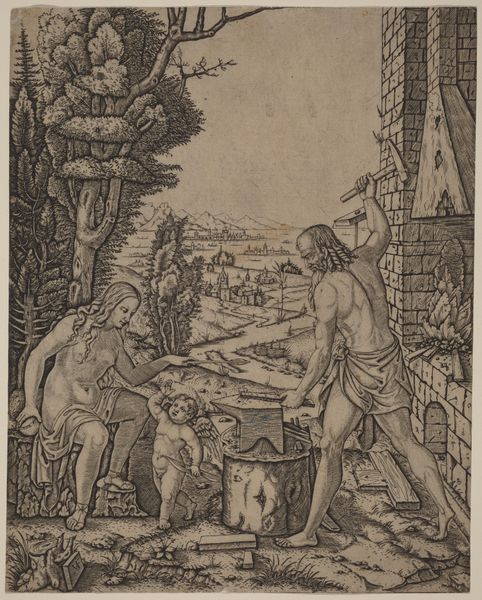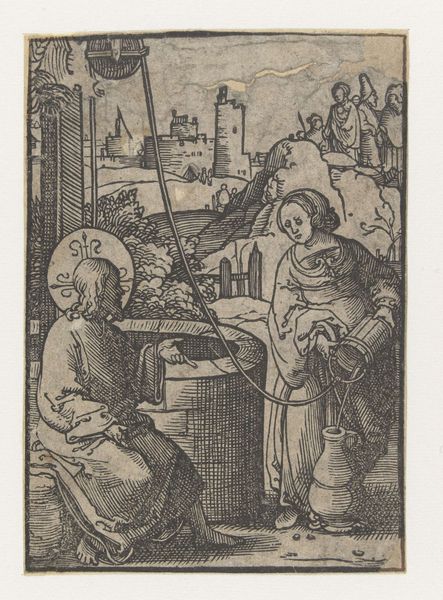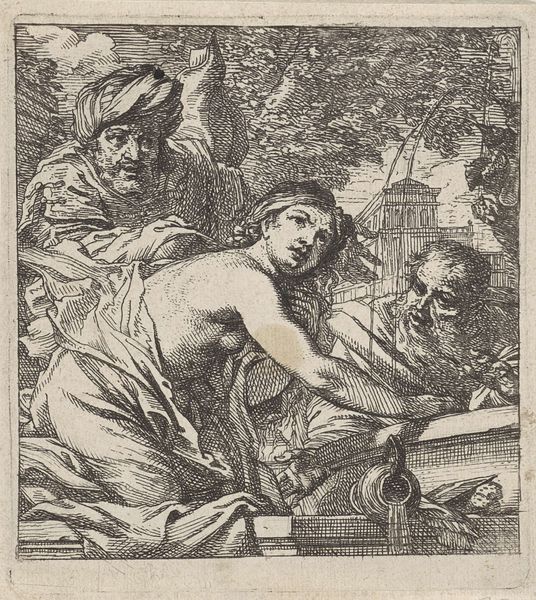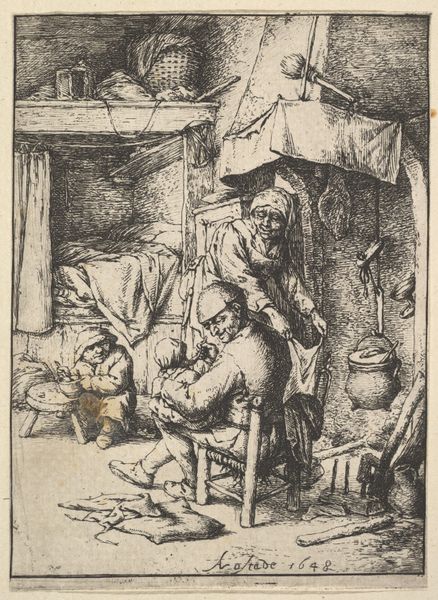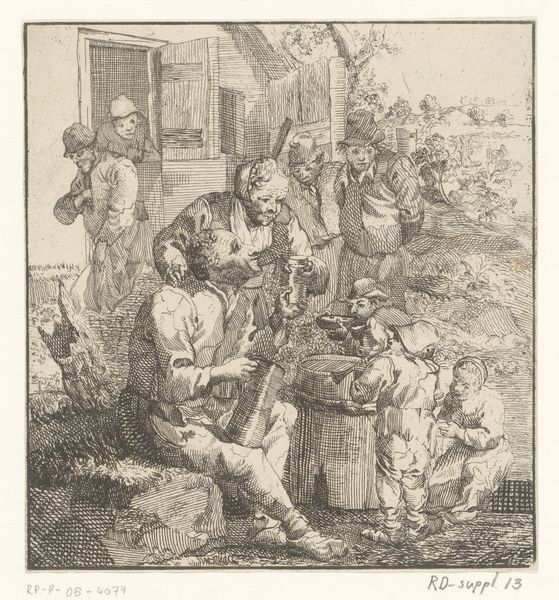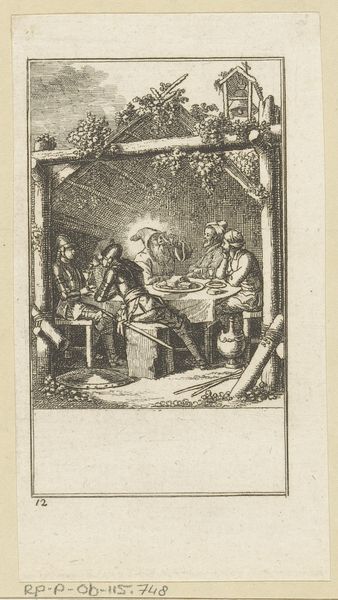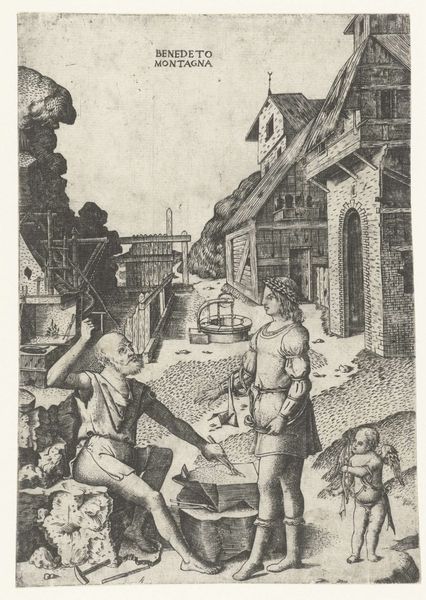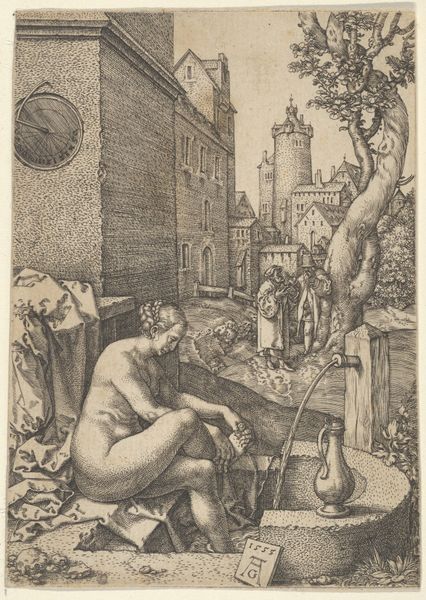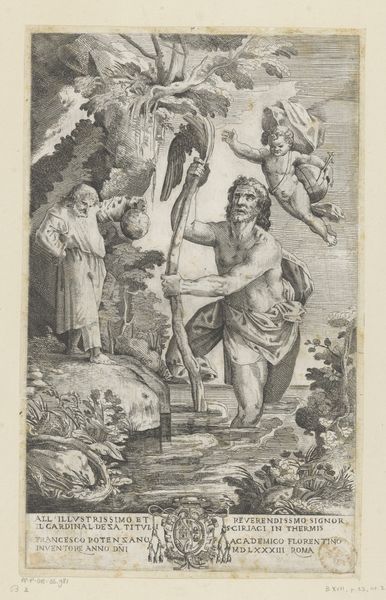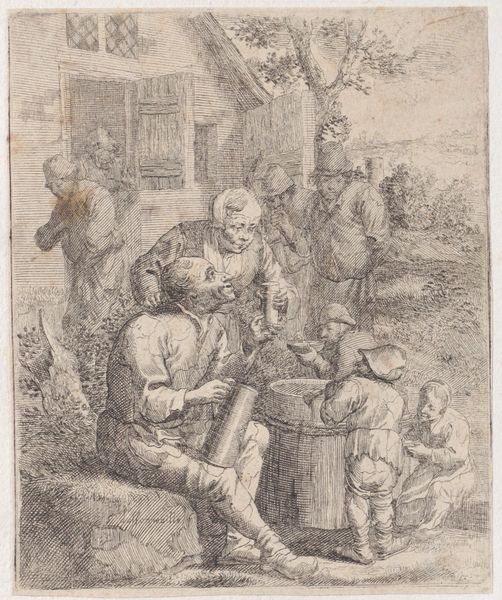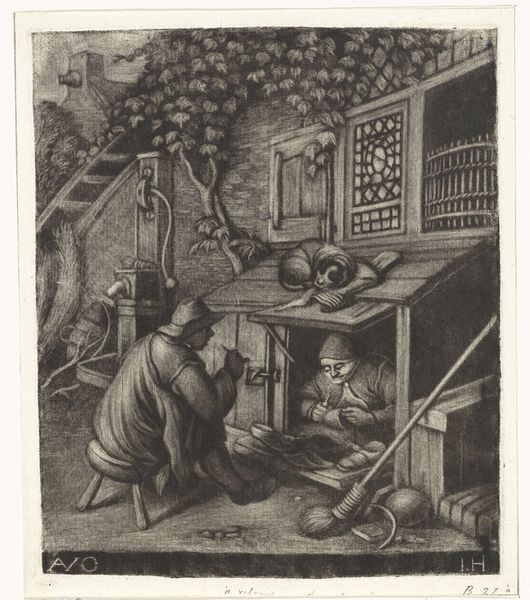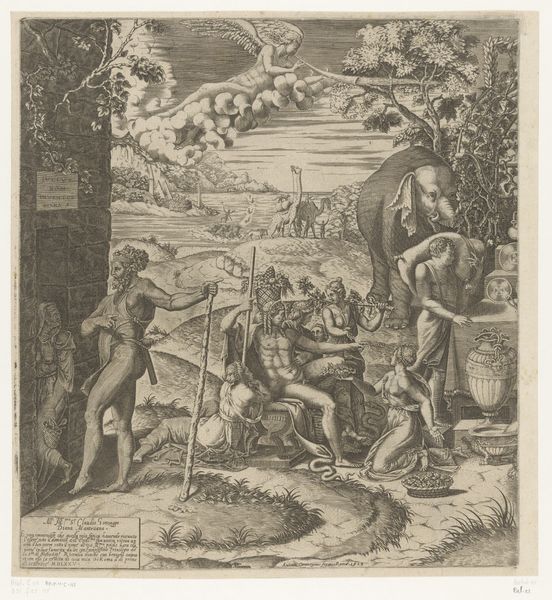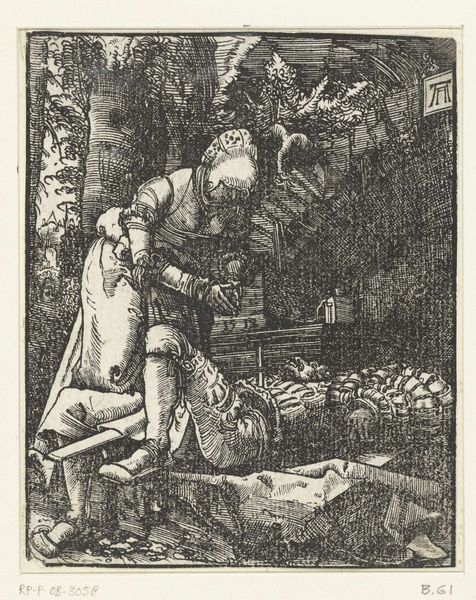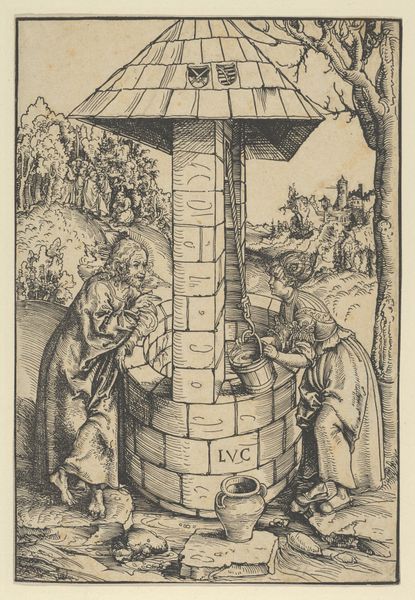
Venus at left holding a golden apple in her right hand and an arrow in her left, Vulcan at his forge beating a piece of iron on an anvil 1500 - 1534
0:00
0:00
drawing, print, engraving
#
drawing
#
allegory
# print
#
landscape
#
classical-realism
#
figuration
#
italian-renaissance
#
engraving
Dimensions: 10 1/16 x 8 1/16 in. (25.5 x 20.4 cm)
Copyright: Public Domain
Curator: This engraving, executed by Marcantonio Raimondi between 1500 and 1534, depicts Venus, Vulcan, and Cupid, a potent combination of beauty, strength, and desire. It resides here at the Metropolitan Museum of Art. What impressions does it conjure for you? Editor: Immediately, I'm struck by the imbalance—Venus lounging serenely, Vulcan laboring intensely. It speaks volumes about gendered labor, doesn’t it? Venus, symbol of beauty, occupies a passive, almost ornamental, role while Vulcan sweats, a figure of brute strength, hammering away. Curator: I find your reading quite insightful, given how the golden apple Venus is holding, a symbol of discord, relates to beauty and divine status. Look how she gestures almost passively, yet subtly directs Cupid's attention toward Vulcan's work, influencing his actions and craft through the power of beauty itself. Editor: Exactly! And isn't Cupid's presence almost mocking? Representing the disruptive force of love, of desire... He highlights the potentially destructive consequences when these mythical beings engage in acts of forced creation, labor, or control. How are Venus’s desires manifest in Vulcan's toil? Curator: He is trapped, yet these mythic pairings reflect the constant negotiation between inner forces – beauty influencing creation, skill shaping desire – concepts timelessly intertwined within our collective understanding of love, creation, and even destruction. Notice also the background scene showing landscape that emphasizes order within nature. Editor: Which seems idealized, contrasting the reality of coerced labour within the foreground. Consider also how artistic portrayals, particularly those with classical underpinnings, perpetuated hierarchical structures... It forces us to see a complicated dynamic between dominance and submission at work. Curator: And that complexity, reflected within the artist's deliberate placement of key objects – the apple, the arrow, the hammer - serves as reminder: symbolic representations hold culturally weighted values that evolve across time and impact each individual differently. Editor: Precisely. Raimondi's image isn't simply a pretty classical scene; it's a microcosm of power dynamics, prompting us to examine how myths themselves function to encode societal norms and perpetuate potentially problematic representations of gender and power. Curator: This viewing refines our view of Venus, Vulcan and Cupid today as something other than simple allegories of love and labour; indeed, it challenges us, within its lines, to ask uncomfortable yet crucial questions about cultural and political landscapes still impacting social realities even now. Editor: This Italian Renaissance-era artwork functions like a distorted mirror to observe aspects of societal power in how figures were represented then, still prompting valuable contemplation today on societal issues that remain pertinent in our culture.
Comments
No comments
Be the first to comment and join the conversation on the ultimate creative platform.
